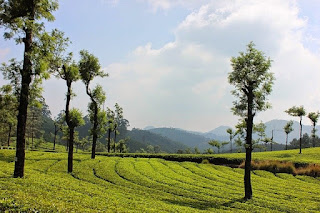If your search for an earthly paradise has been less than fruitful, try following history’s Phoenician, Greek and Roman galleys, Arab dhows and even Chinese junks to the palm-fringed bays of this thin coastal stretch of tropical greenery on the Indian Ocean.
Trivandrum is the capital of the Indian state of Kerala, meaning “land of coconuts” in the region’s Malayalam language. No name could be more fitting. Jammed between the sea and coastal mountains, Kerala is subject to the monsoon rains that flood the land and the rice paddies on the subcontinent’s southern tip. Long growing seasons yield a coconut crop every 40 days, with each tree producing 20 to 30 coconuts per harvest. Natives of Kerala, most of whom seem to have at least four or five trees on their small plots of land, claim they are “the trees of heaven.” They use the coconuts themselves for food, coco water and “heady toddy” for drinking; the leaves for mats and roofs, the oil for cooking and the fiber for a thriving rope industry.
Almost every country has its hidden garden, usually a beautiful but unknown region that takes a back seat to more publicized and popular places. Kerala is India’s hidden garden. Coconut trees are not idle bystanders to Kerala's landscape or its hard-working people. Even a few trees on a small farmer's or laborer's house site can yield nutritious coconut meat, a rich cooking oil, sap to produce the mildly alcoholic and mineral-rich "toddy" to drink or sell, husks for the coir fiber industry, and leaves for roof thatching for the poor. In addition, most of Kerala's Hindu families still burn coconut oil in their vilaku, or religious lamps. People of all faiths thrill to stories from the Mahabharata and Ramayana epics as gaudily clad Kathakali dancers twirl and gesture to rhythmic drum beats behind the flickering light of a large coconut oil lamp. When one considers all the benefits of the coconut tree, there is little wonder that Kerala has been called the land of coconuts.











